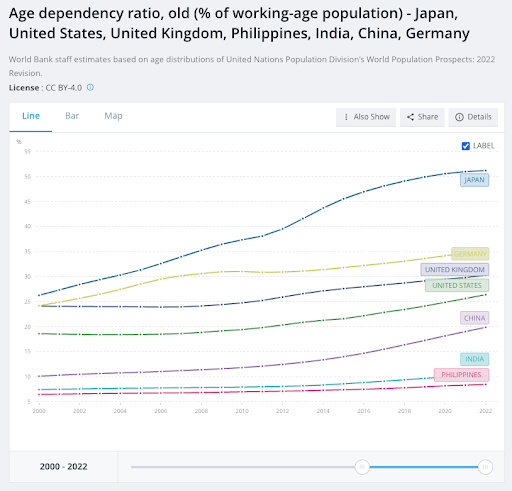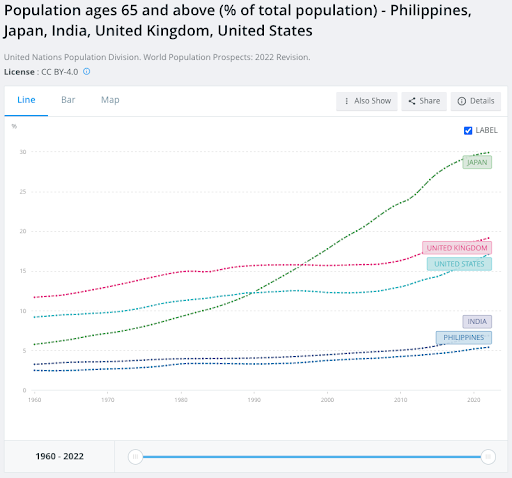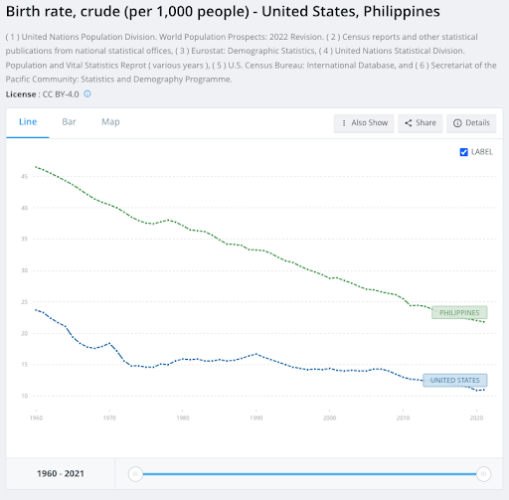From Wall Street boardrooms to Silicon Valley startups, we cross borders and industries to deliver the freshest business insights. Stay in the know with Gone Global!
The power of a young population
The developed world is getting old fast. The baby boomers had their heyday, the world got rich, and the subsequent generations stopped having kids.
Now, as the population ages, there will be fewer working-age carers and taxpayers to support more retirees and dependents. Fewer people working means less consumption, higher costs, staff shortages, and increasing government shortfalls.
In the US, 17% of the population is over 65 years of age. For the UK, it’s 19%, and for Japan, it’s 30%. Since 1960, the number of 65+ has almost doubled for the US and UK, while for Japan, the number has risen 400%. And the trend is continuing.
Economists look to the ‘age dependency ratio‘ – a measure of productive workers to retired – as a gauge of economic resilience. The trend is obvious:
The percentage of working age remains pretty stable at about 60%-65% of the population, but the proportion of retirees is growing disproportionately large.
China will soon experience the same old-age phenomenon as a result of its long-standing one-child policy.
Meanwhile, the birth rates in developed nations continue to plummet.
Thankfully, there are a few countries with higher birth rates and young populations. The Philippines, a proud catholic country, is reproducing at double the rate of the US.
With stagnant population growth, developed countries long ago realized that the only way to fill jobs and keep the economy growing was to import labor, either through permanent immigration or temporary visas.
Historically, strong border controls limited these flows and strictly controlled labor migration.
In the last ten years, with the industry moving online and into the cloud, workers could suddenly join the global economy without moving countries or crossing borders. They didn’t even have to leave home.
The Internet revolution has mobilized millions of workers without any physical migration.
People have blamed outsourcing for job losses, but unemployment levels remain at record lows, and job openings are seeing record highs.
Instead of being a problem for the West, offshore staffing seems necessary for its aging population and staff shortages.
It’s a win-win.
Developing nations get the paying jobs they need, while the developed countries access (relatively) cheap staff, and can keep their economies moving.
The question for your business:
What’s your 20 year hiring strategy? Robots, or retirees?




 Independent
Independent





















